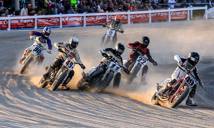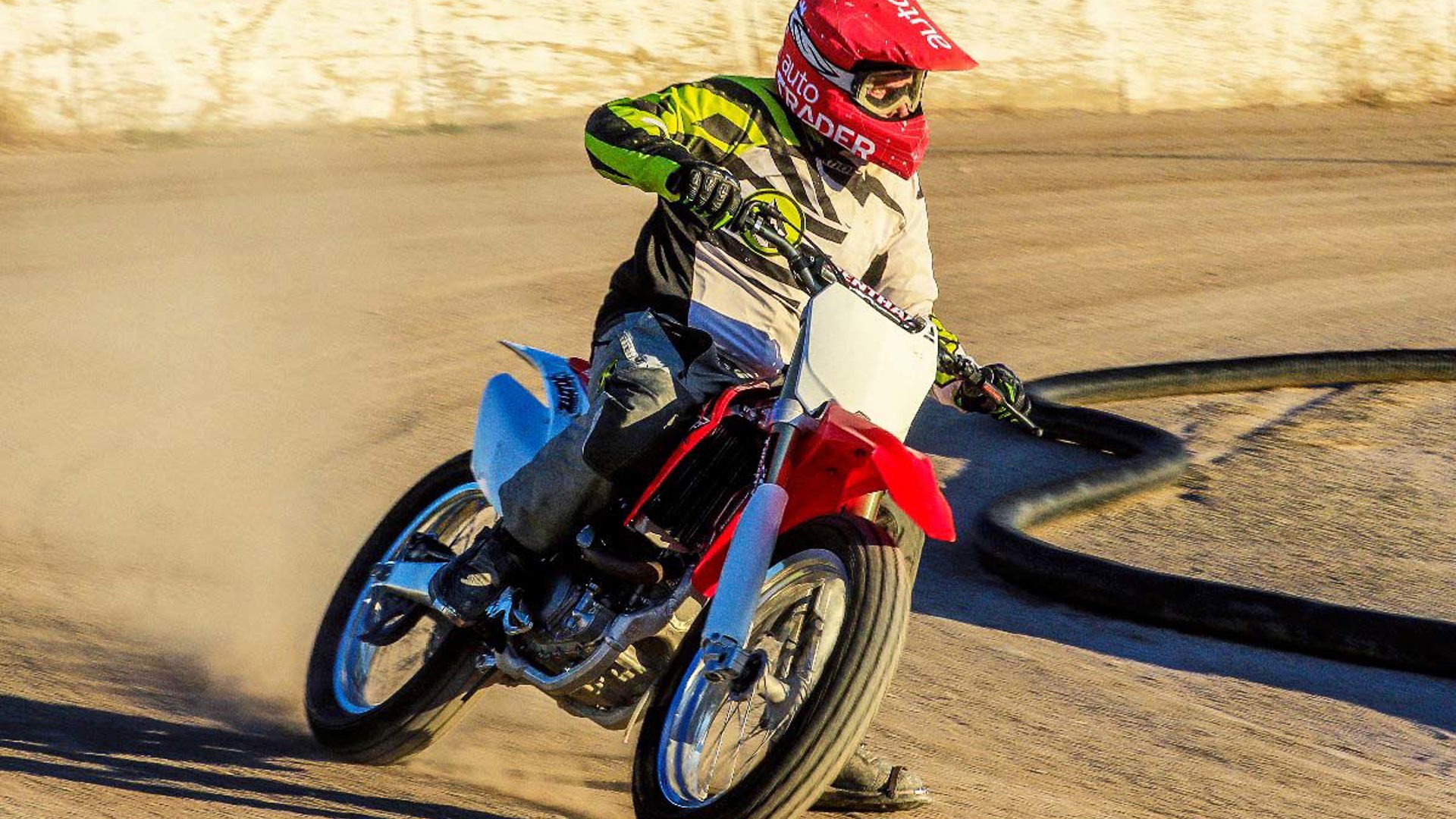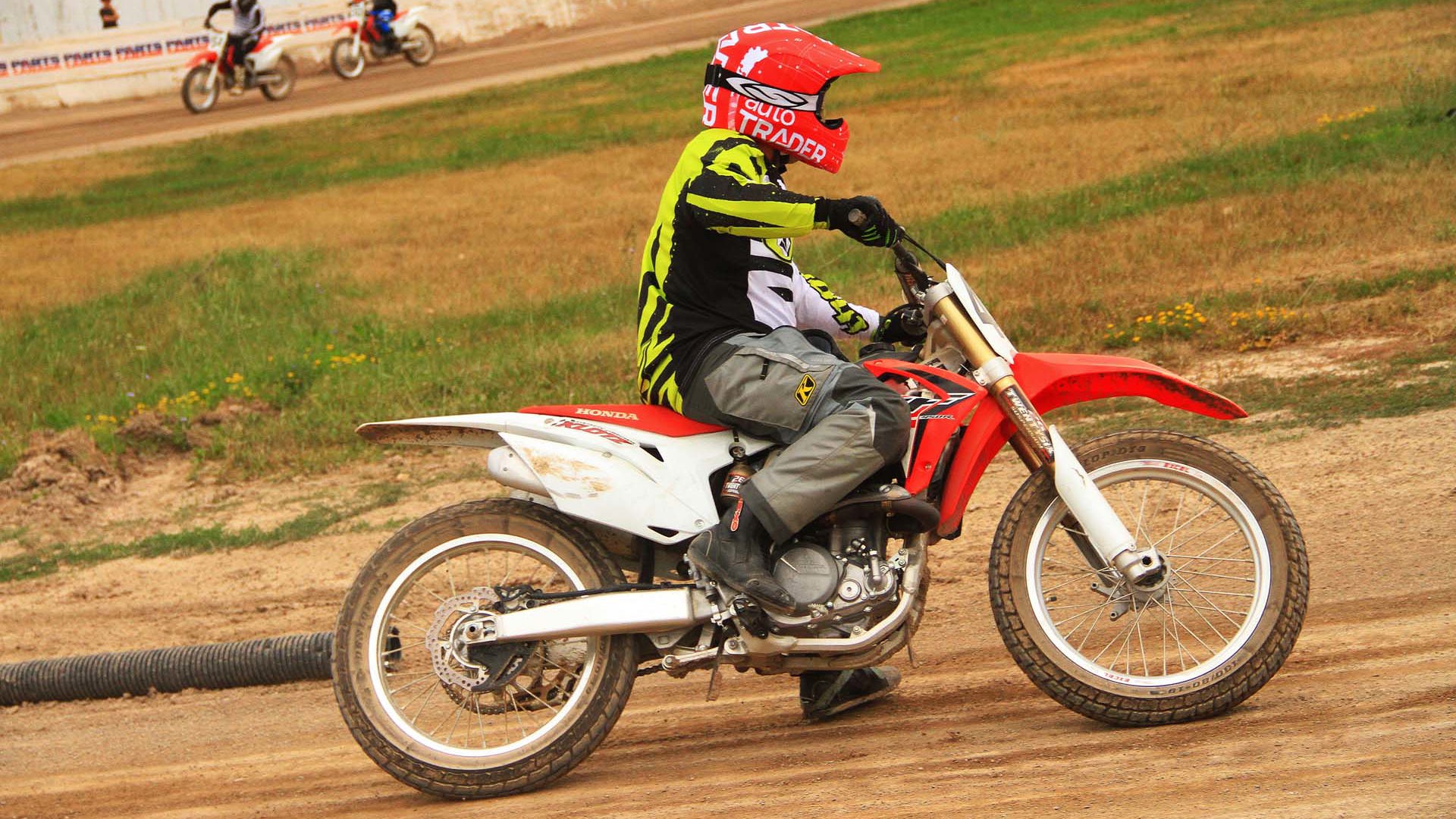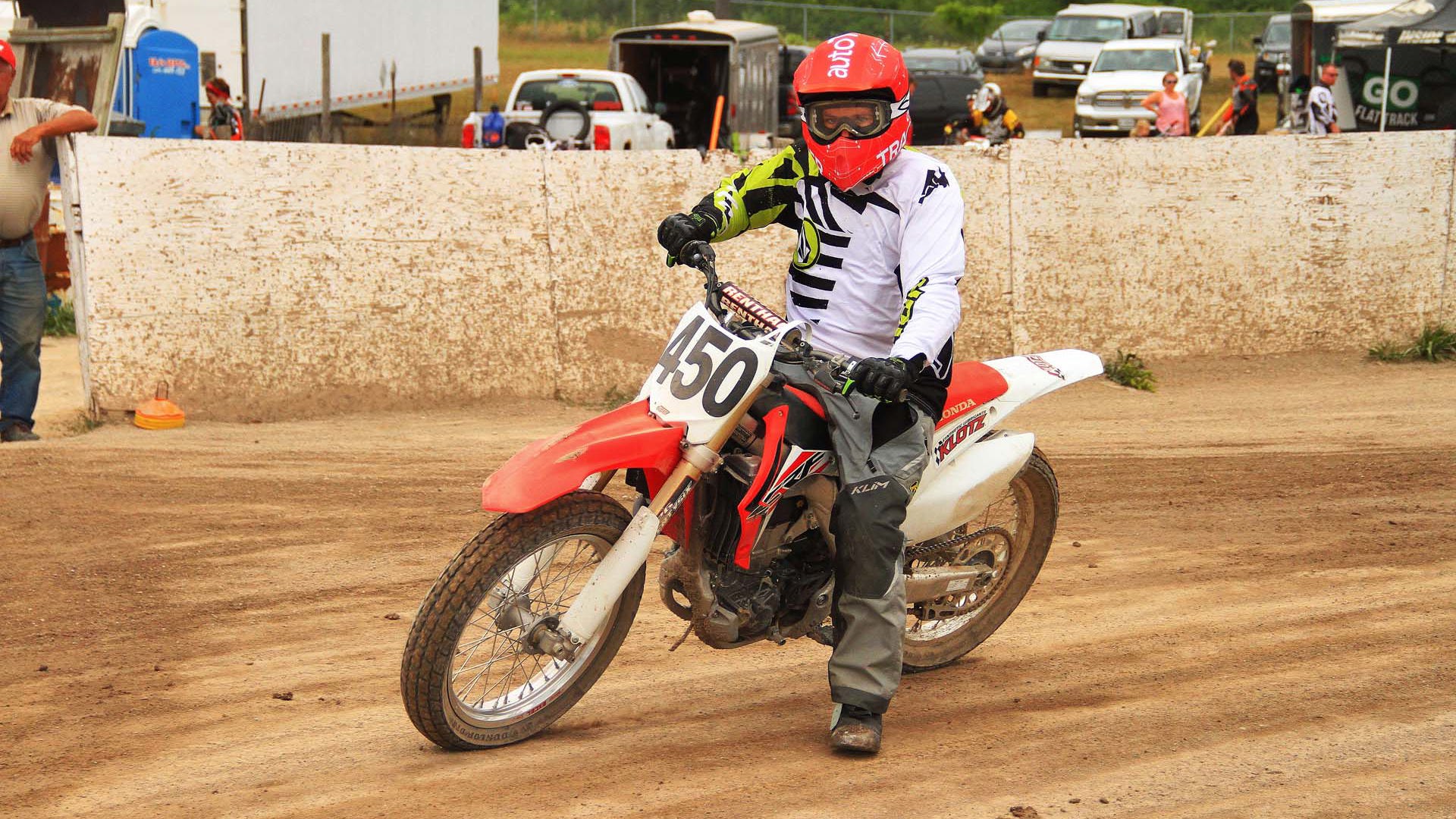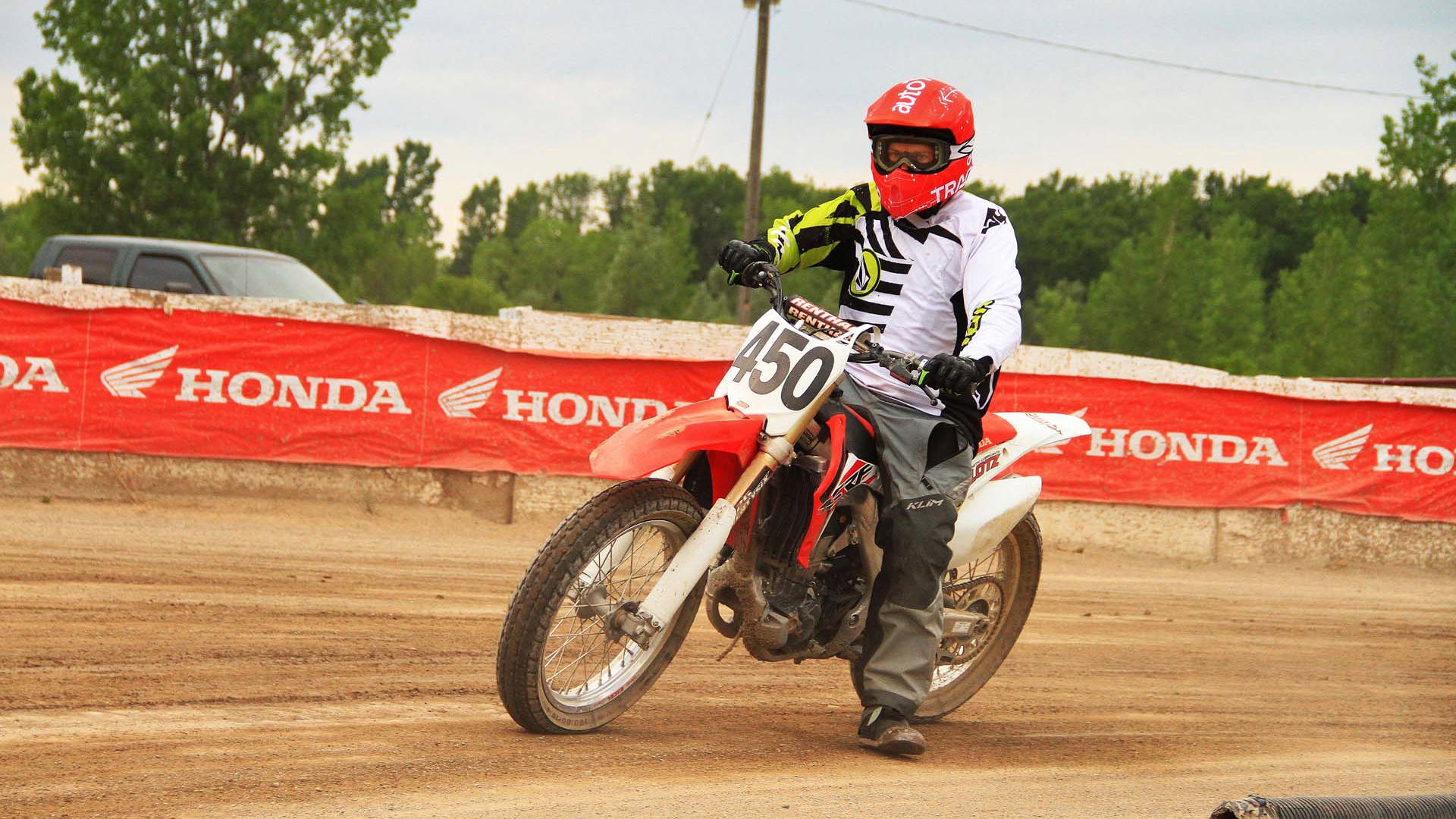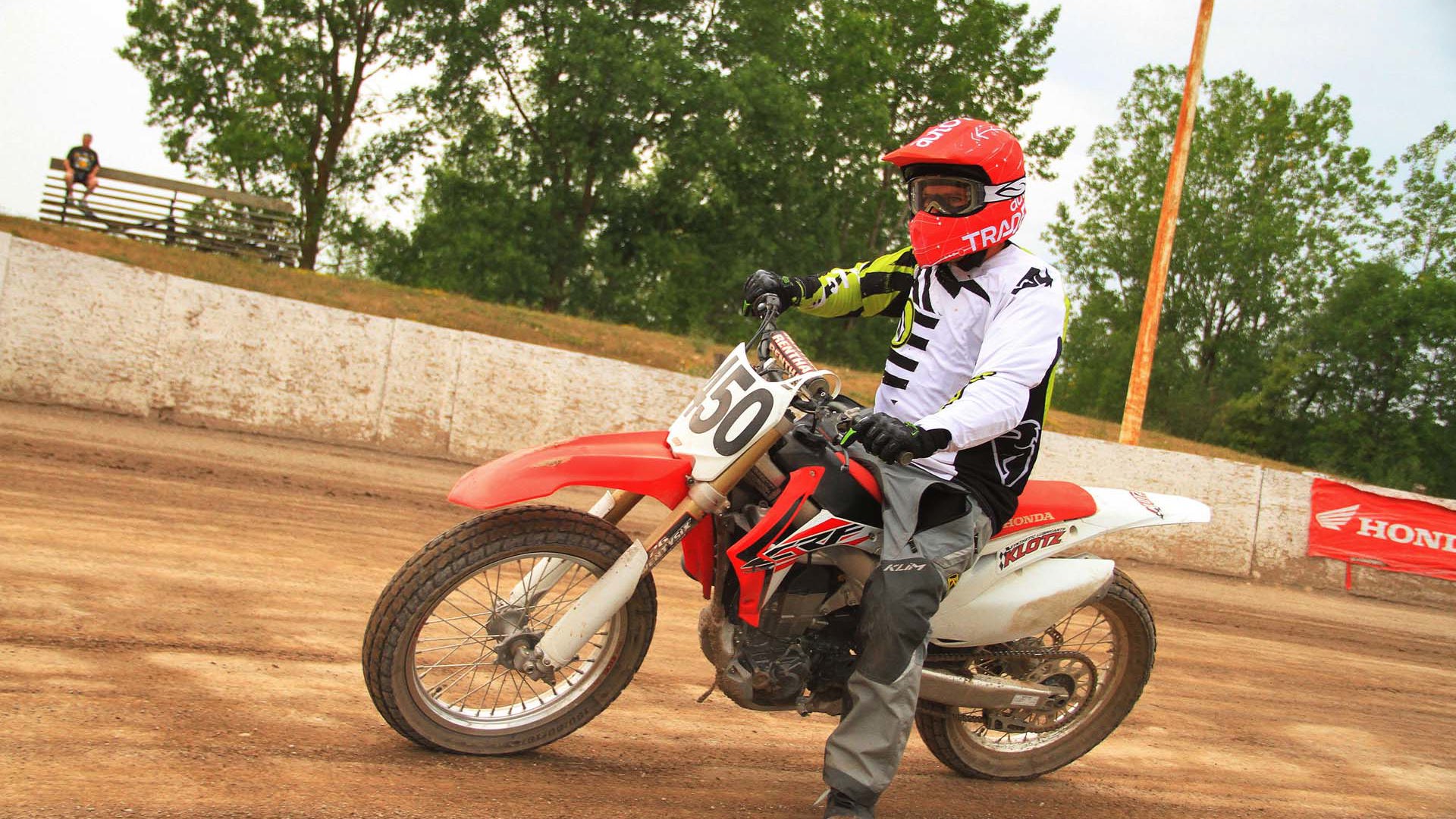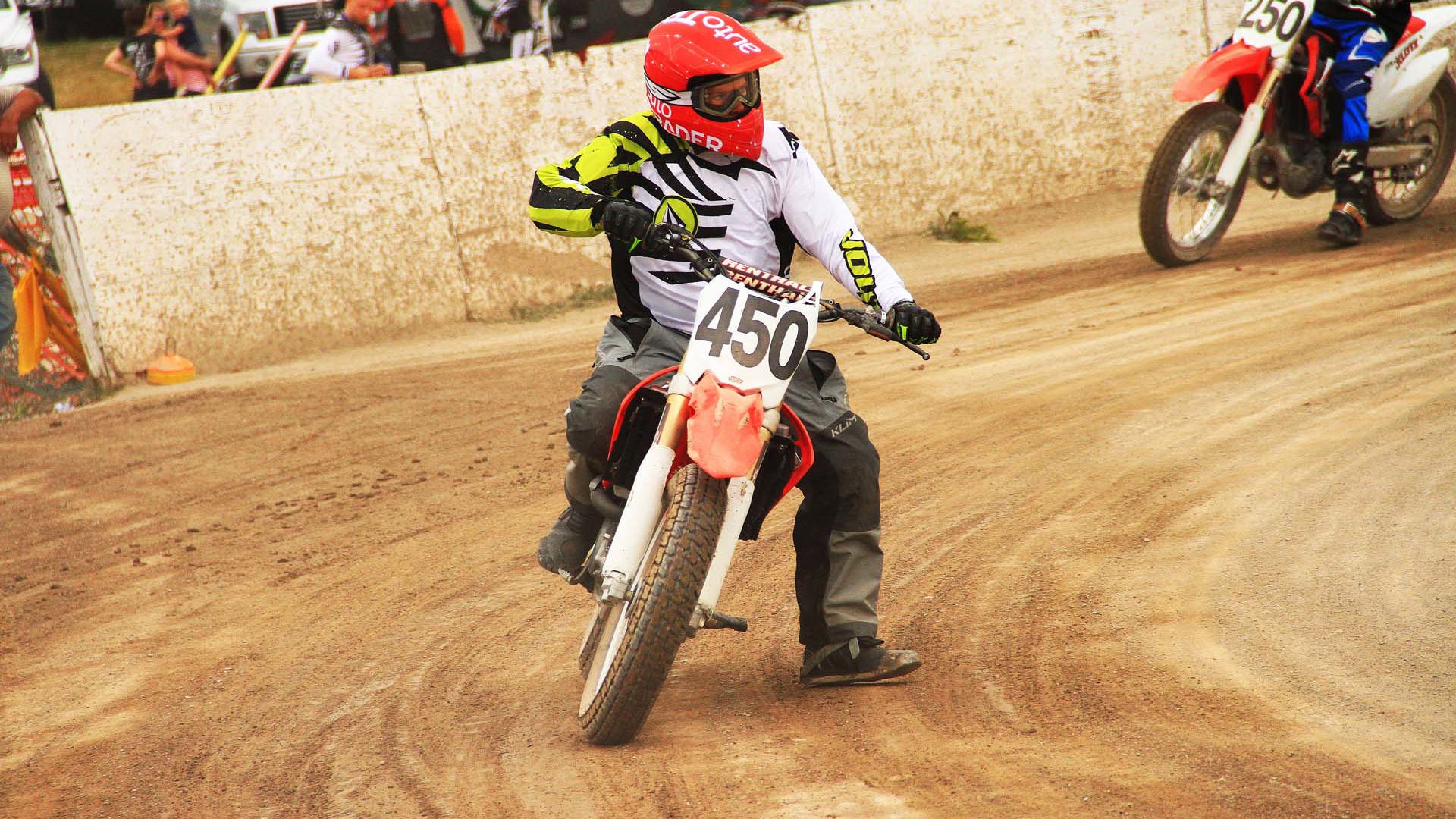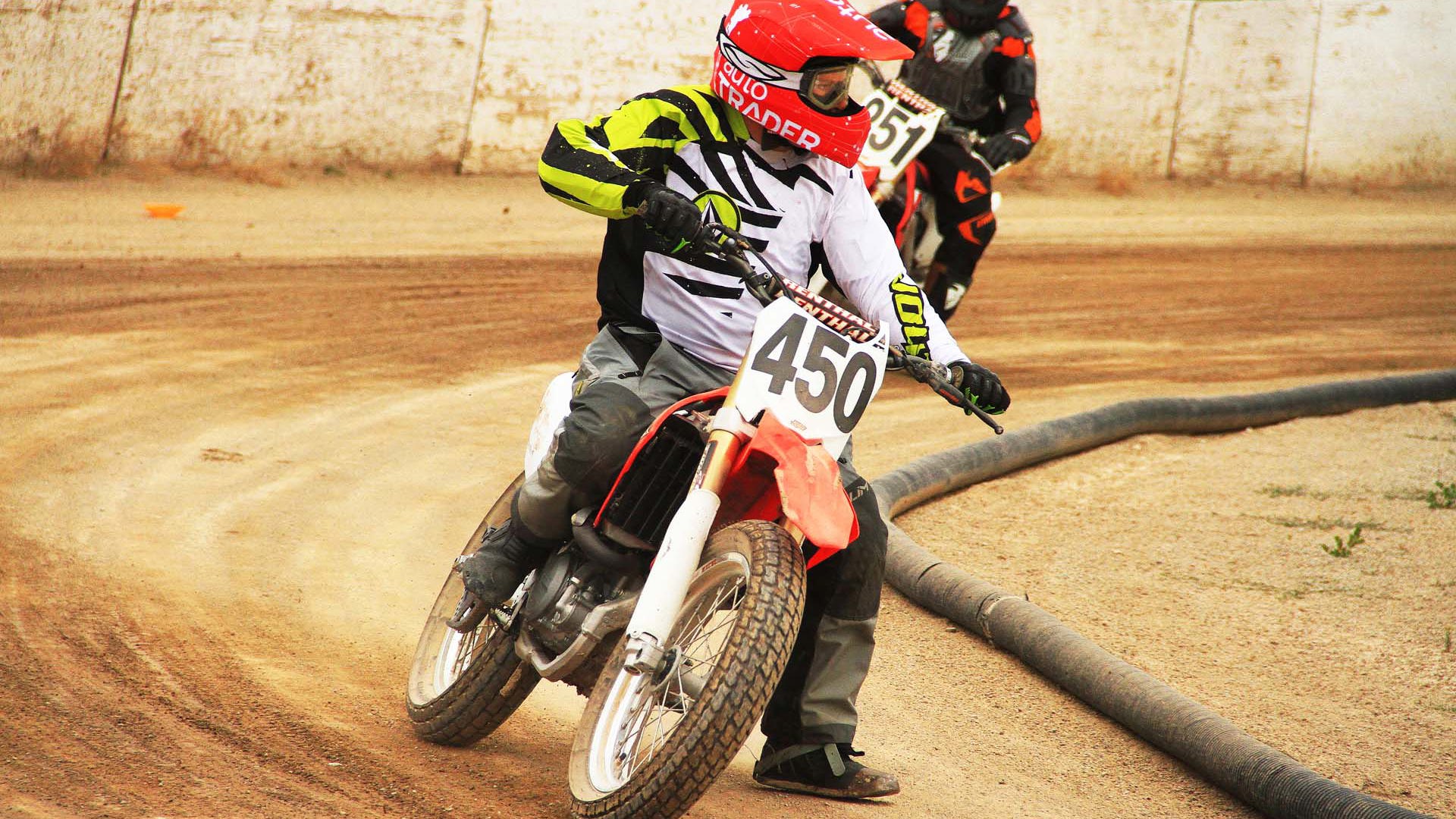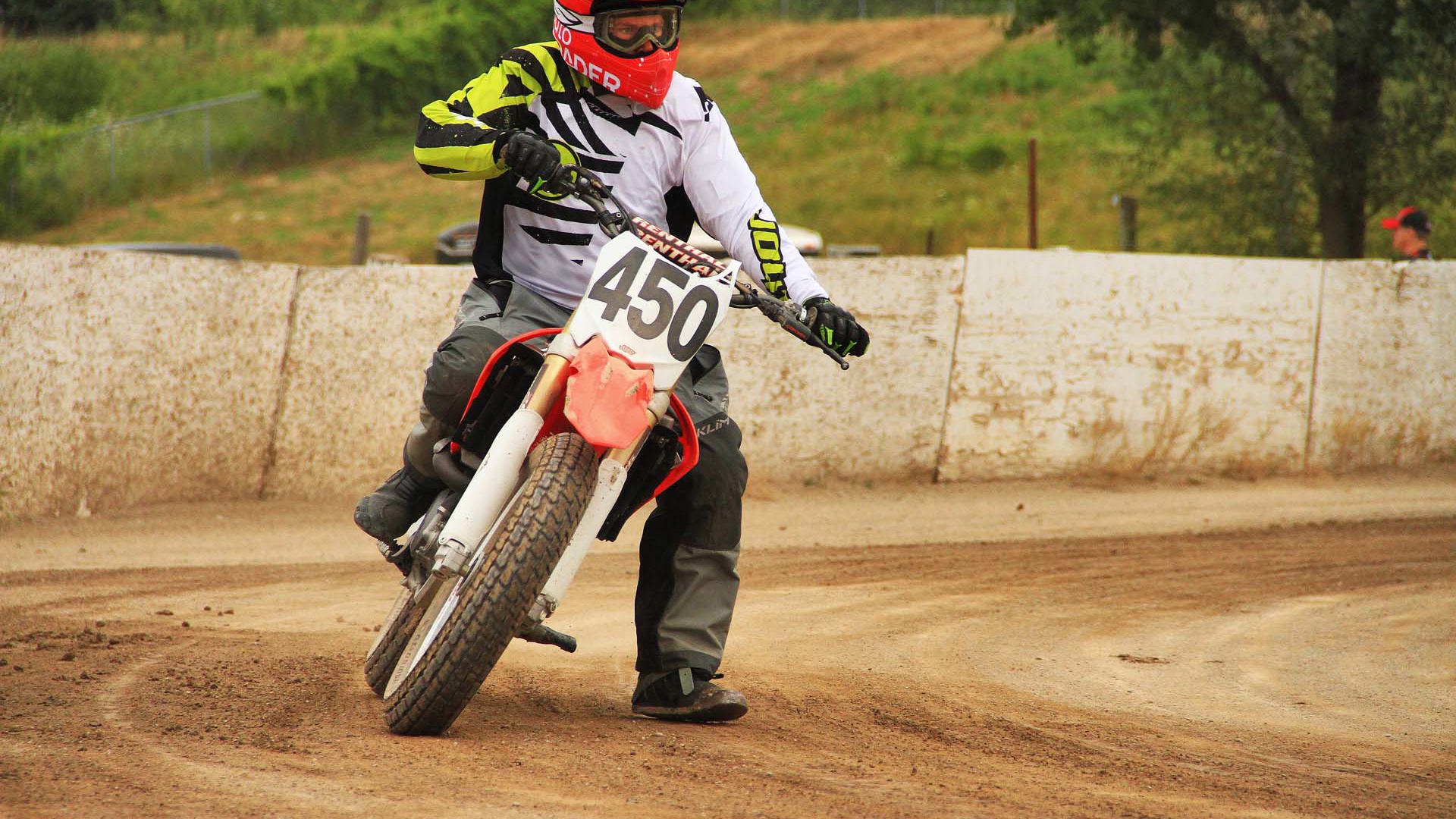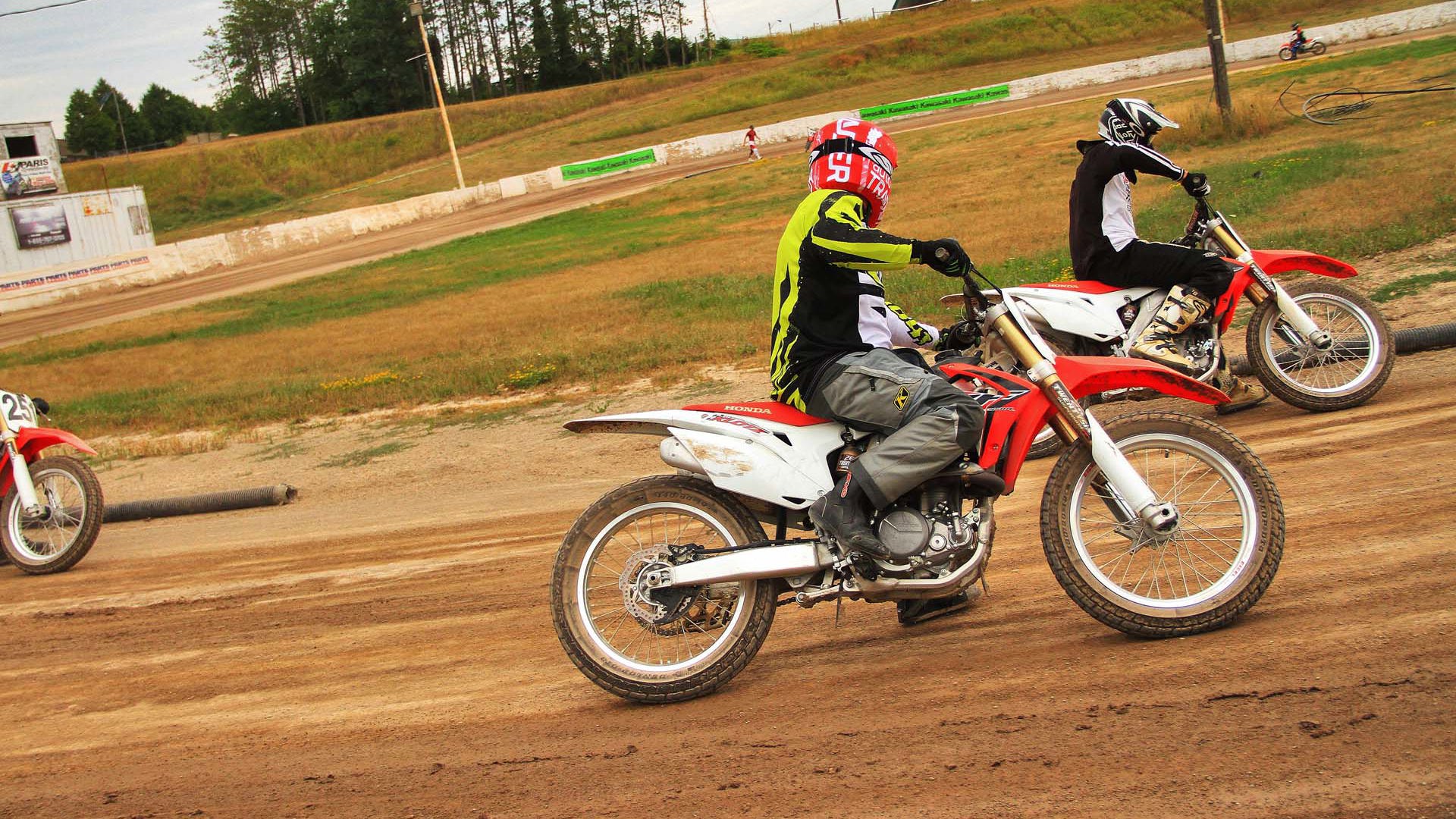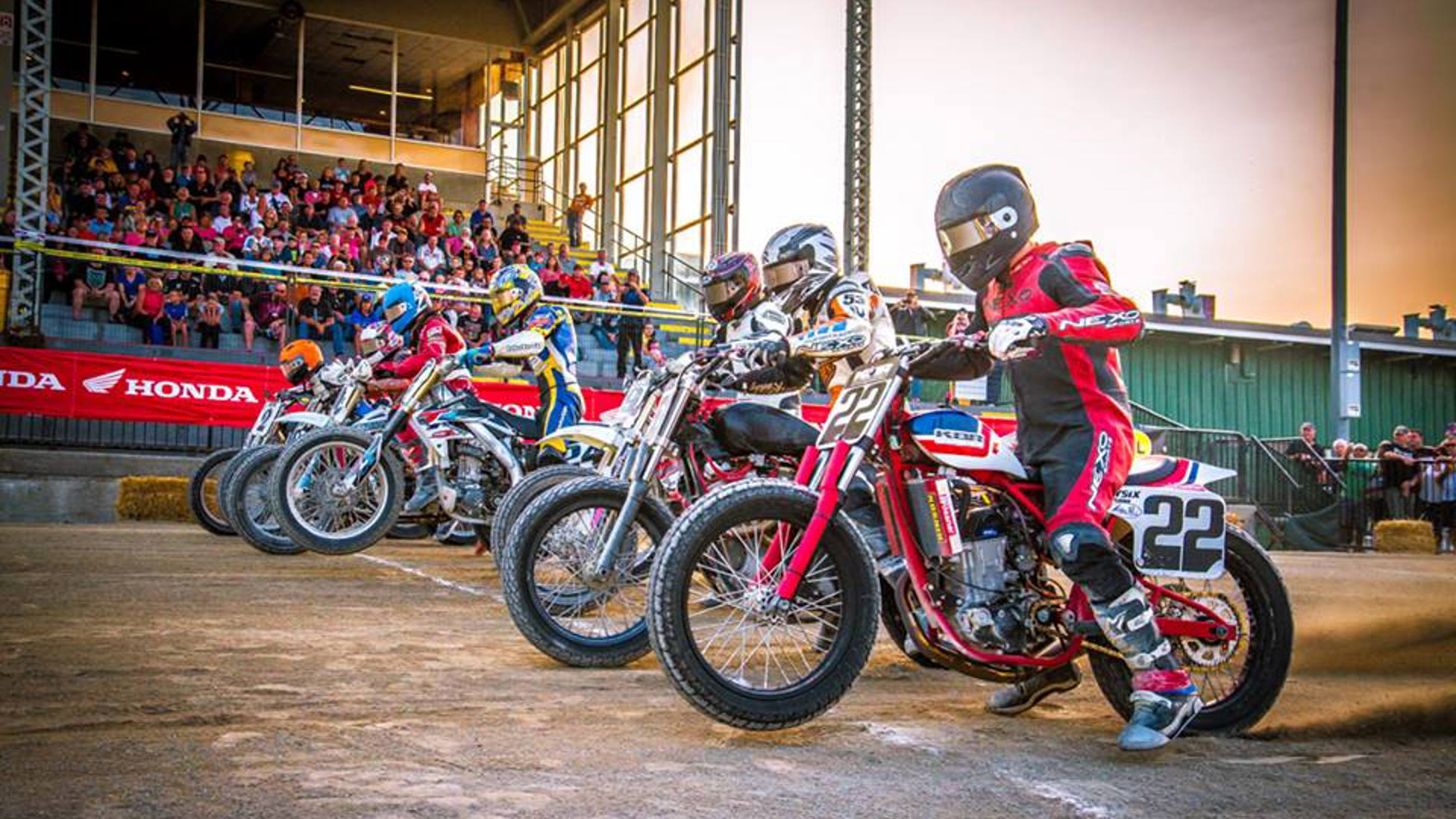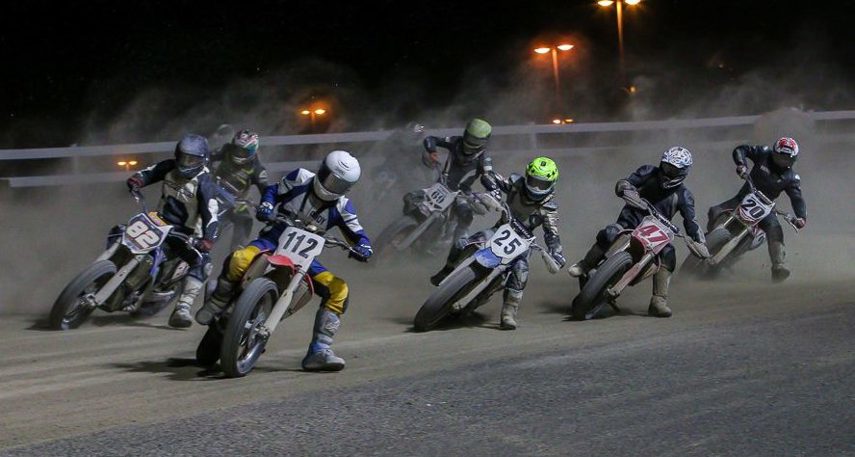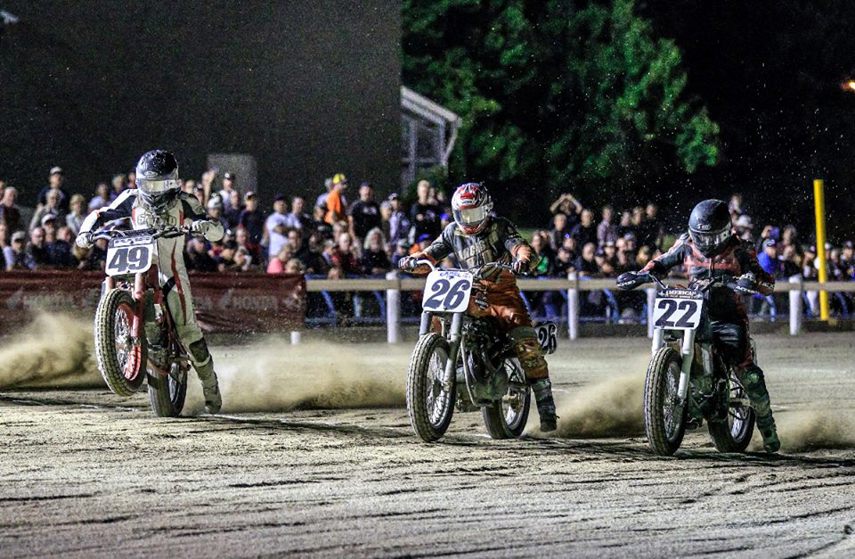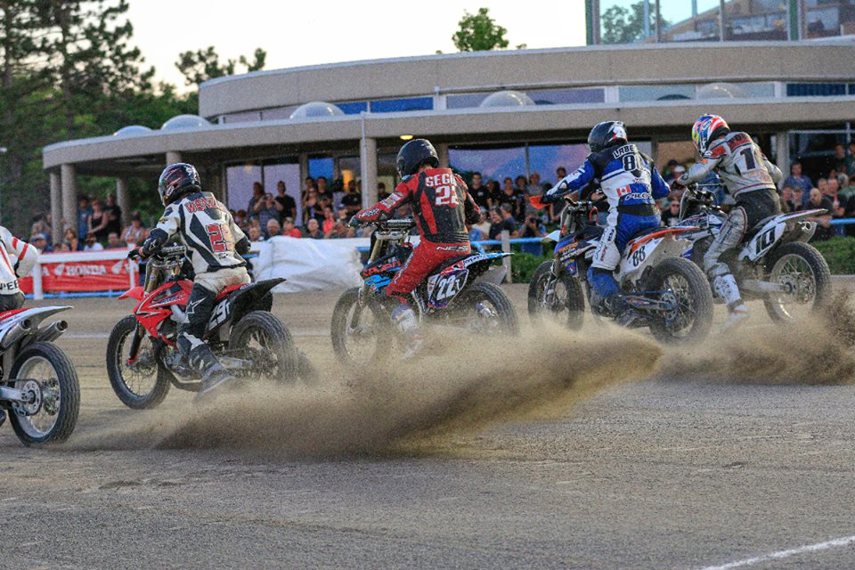The nutcases out on the Flamboro Downs circuit are sending a packed house into raptures. Their bikes hurtle down the straight and into the banked corners of the half-mile oval without, fear, or front brakes, or regard for the laws of physics.
The bikes skip sideways across pea gravel and ruts. The riders, elbows high, trust the strength of their left leg to keep their bucking, furious steeds underneath them. The bikes are almost perpendicular to the ground. The brraaarrp-brarp-brrrraaaaaarrrrpp of engines throttle-steering through turns echoes off the wall behind me and drowns out the oohs and ahhs of the enthralled crowd.
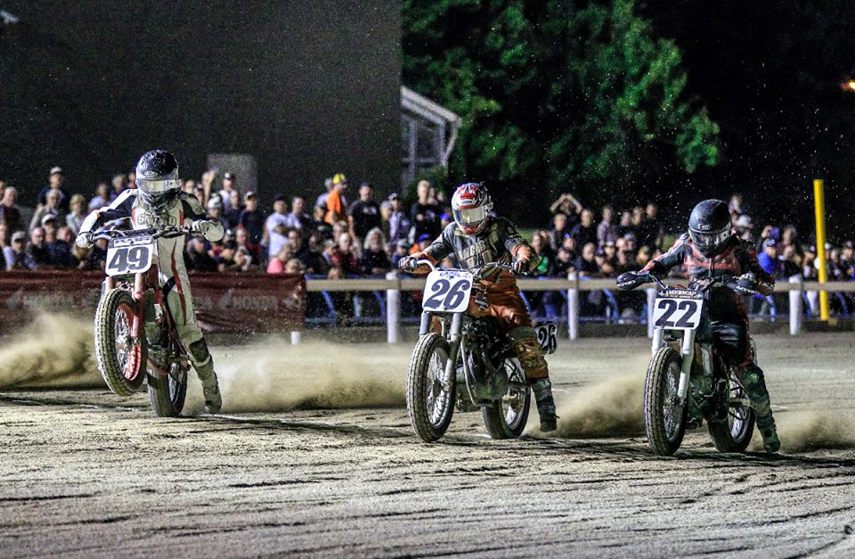
This is full on, half-mile, big-track Flat Tracking. This is where the big guns come out to play on bikes that frighten most mortals just parked in the pits. This is some of the most exciting motorsport available, and it’s cheap – tickets are often under $25.
The race at Flamboro is a national series event, the riders are top-notch, even in the novice class. Even the kids racing on little 85cc motorbikes are highly skilled. One of them, Boyd Deadman, recently won a novice race against riders on 450cc machines at the Paris, Ontario, short track.
The short track is the first step on the ladder that leads to here. It’s the short track where I play “flat tracker”. Or at least tried to. I got the Flat Track bug back last year when I did the Go Flat Track school courtesy of Honda. I’d done pretty well learning the sport that day, or so I thought. And I’d been dreaming of dirt and dust and drifts ever since. When a bike was offered up for me to actually race on, I jumped at the chance.
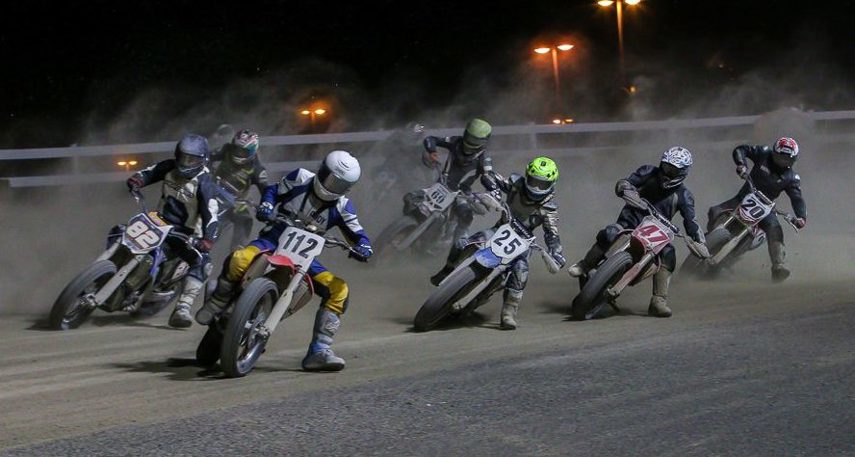
Learning Curve
“Oh, bugger. I’m not supposed to be in this part of the track,” I thought to myself. Even before the back wheel snapped out I knew I was in strife. I’d muffed my entry to the corner and stomped on the rear brake in a panic, now I was mid-corner and carrying nowhere near enough speed. I knew the leader was coming by to lap me, I knew I had to carry decent speed to make the next corner work so I grabbed a fistful of throttle.
That’s when the back end broke loose. I remembered my lessons. I planted my foot, eased off the throttle a little then got back on it.
Saved it!
I didn’t have time to celebrate. The poor bloke trying to lap me had suddenly found a fat Aussie, out of control, directly in his path. He hit me from behind, I stayed up. He went down. I was mortified. He was angry.
But ultimately, he was fine, his bike was fine, his body was fine and everything was a-okay. That’s the great beauty of short-track flat track. Everything is relatively low speed, the bikes are bulletproof, the safety gear effective.
So why the big gap between a successful day at the school and woeful night out on the track? A year can be a very long time. Last year, when I did the Flat Track Canada “Go Flat Track” school in Paris, Ontario, I was blown away by the level of fun and adrenaline available at a stupidly cheap rate.
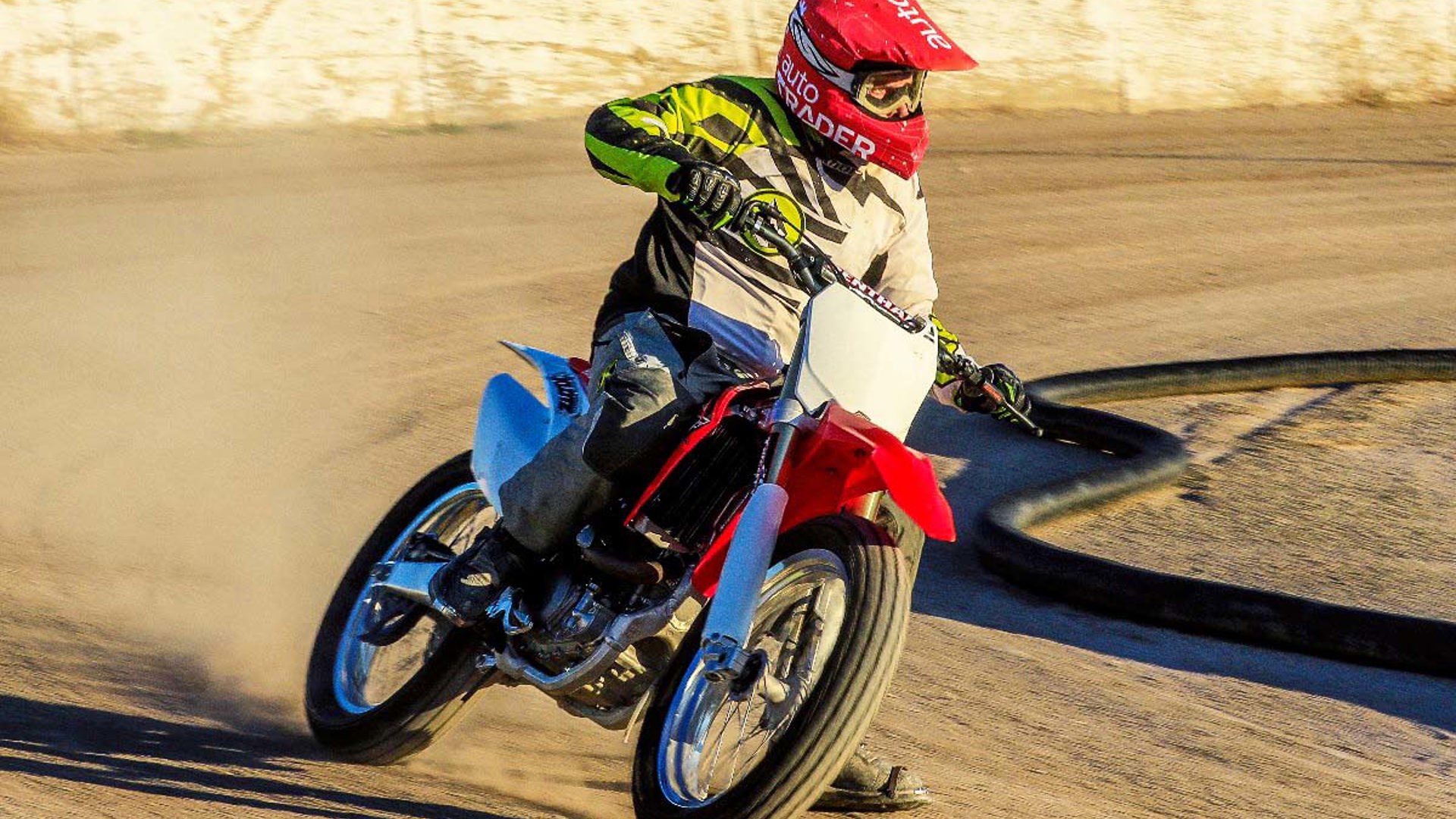
I also seem to remember being better at it than I was.
Fuelled by that false confidence I dove straight into a Friday night short-track race at Paris, after first trying the sport out in just one day of school – almost a year earlier.
So of course I was a rolling chicane. After struggling to come up to speed I was humbled, but the adrenaline dump and the indelible grin were both still very much present.
In order to redeem myself I did what everyone who wants to learn something does: I went back to school.
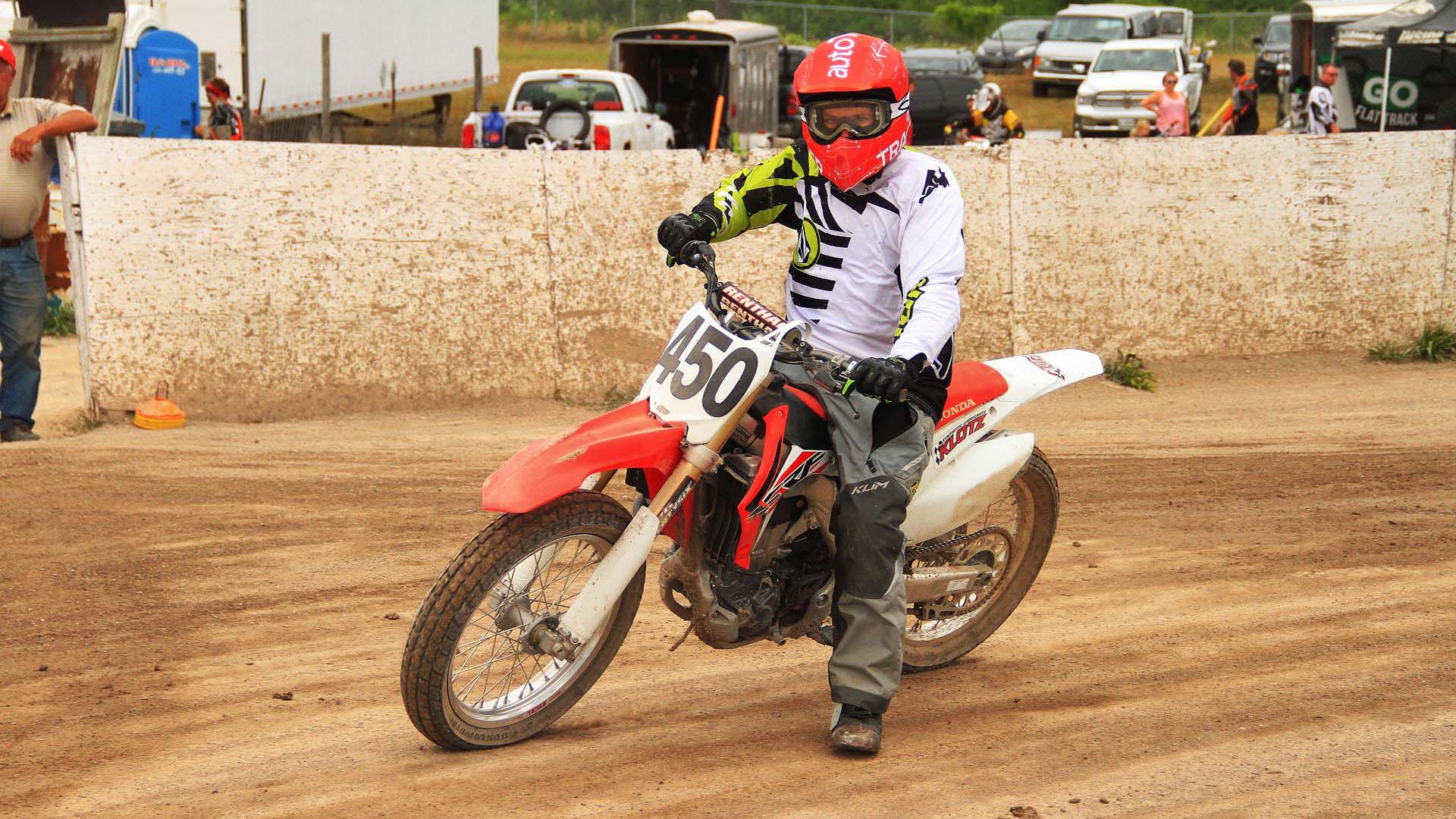
Aaron Hesmer’s Flat Track school is the best possible place to learn the sport and develop (or redevelop) your skills. One session in and it was clear what I’d forgotten: You need entry speed to succeed. Flat tracking requires a level of commitment that challenges my self-preservation instincts. It’s money well spent, especially if you’re new to the sport or just looking to tune yourself up. The hour of free-ride time at the end will give you the other thing any aspiring flat tracker will need plenty of: seat time.
There are other ways to get yourself back up to speed too. Like Tuesday night practice at the Paris short track. For $30, you can rip around the little track for a few hours on a Tuesday night getting in as much seat time as you could muster.
With another day of school and a Tuesday practice under my belt I felt confident enough to tackle another race night at the short track. These regional nights are the perfect place to hone your skills.
With more recent seat time under my belt, I suited up in the novice category aboard a borrowed CRF450R. In my first heat I met my goal. I didn’t get lapped, in fact I finished on the same straight as the next rider in my heat.
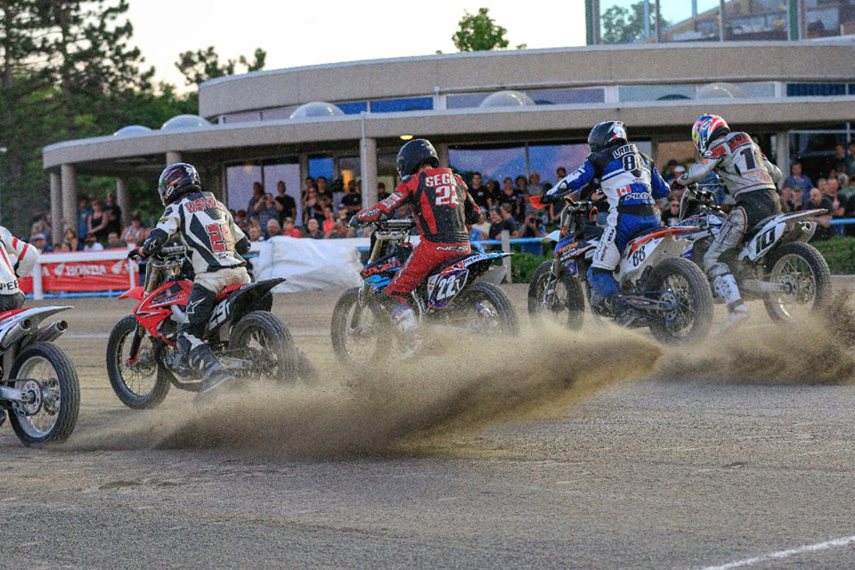
In my second heat I met the clay. With my face. But I didn’t mind, at the time I was running with the other people in my heat, in fact I had enough time to jump up and wheel my bike off the track before the others came around. The bike was fine, I was fine. My ego was less fine, but my smile wasn’t going anywhere.
The point is I’m learning, and having as much fun as I’ve ever had on a motorcycle while I do it in relative safety and without risking thousands of dollars’ worth of bike damage every time I turn into a corner.
This sport is accessible, it’s cheap, and it’s exciting whether you’re on a bike, scared witless on the Paris short track or in the stands, awe-struck watching a national series half-mile race.
There are four more national events scheduled in Ontario, with details on FlatTrackCanada.com. If you want to get your own taste of flat-track racing there are schools running all the way into October. You can find them on GoFlatTrack.com.
